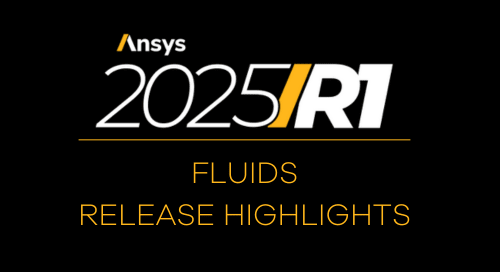Ahhh, Thanksgiving, a day meant for gathering with loved ones to remember all that is good in our lives. Unfortunately, Thanksgiving is not without its hazards, but fear not, Computational Fluid Design (CFD) is here to help. CFD can help you cook a turkey, even supersonically, so it reaches a safe 160°F. Traveling to get to your Thanksgiving gathering? Make sure your car is aerodynamically optimized with CFD. Oh, you are hosting, then keep all the rooms in your house at the perfect temperature by balancing your heating and air conditioning system using CFD!
Yes, I see the issue. The turkey is cooked and looks fabulous. The guests all arrived safely. Everyone is ready to sit down to the table. Your sister invited her in-laws to join and one of them (lets call them “X”) has some extreme political positions and is fond of telling anyone and everyone about them. If that were the only problem, then figuring out where to sit would be easy: as far away from X as possible. But no, your newly self-named cousin “Z” will be moping their way through dinner too. Now the problem is more complicated. Where do you sit to avoid the hot air which is filled with either political conspiracy theories or the benefits of the latest fad diet?
Figure 1: Around the Thanksgiving Dinner Table
As the host you get to assign seating positions at the table, a table like one shown in figure 1. Where do you sit to be least affected by the hot air produced by X and Z? Worse luck, you only have time to setup and run one model!
ANSYS Workbench’s parametric analysis capabilities make it possible to setup dozens or hundreds of analysis design points and run all of them. The solution can save full results for each design point, or you can identify just the output parameters which are important to your process. Solving several hundred analyses can take a long time, so simplifying the problem becomes exceptionally important. In this case, reducing the 3D volume to the blue 2D surface is sufficient to solve the problem.
Breath inlet velocities and temperatures are set for each seating position, defaulting to reasonable values. Velocity and temperature values are then increased for both X and Z with X having higher velocity (emphatic, but not as irritating) and Z having higher temperature (not as forceful but annoying over time). A table of 131 design points maps all possible seating positions for X and Z. Completing the solution set requires only updating all the design points and capturing the temperature on each head surface as the output parameters of each analysis.
Individually, the velocity results are what you might expect. The unfortunate soul, cousin Jim, sitting in position 10, directly in the path of X gets blasted with higher-velocity air, as shown in figure 2 below.
Figure 2: Velocity field with "X" at Position 4 and "Z" at Position 12
Due to mixing and diffusion, however, Jim does not get overheated as their own breathing deflects most of the heat. Unfortunately, Aunt Edith in position 3 gets blindsided by the flow of raw loathing from Z after Grandpa (in position 1 of course) deflects the stream.
Figure 3: Temperature Field with "X" at Position 4 and "Z" at Position 12
Compiling the results shows some interesting trends to prevent being targeted by hot air. First, assume that we are neither X nor Z. Under these conditions the average temperatures for all seating arrangements produce the lowest temperatures at positions 4 and 10. Maximum temperatures are found at positions 2, 6, 8, and 12. So, that solves it, right? Sit as close to the middle of the table as possible and breathe, as steady breathing can keep you cool even if X or Z are sitting directly across from you. That seems like good advice, as long as the assumption holds true. Compiling results including the seating positions for X and Z shows these positions are routinely higher in temperature than any other, as shown in Figure 4 below.
Figure 4: Graph of Maximum Seat Temperatures relative to temperatures of X and Z
The maximum value, independent of seating position, is the seat occupied by either X or Z about 90% of the time. Of the data points above this line, exactly 90% are seats taken by X or Z. This means you have a 90% chance of avoiding hot air no matter where you sit at the table; just make sure you are not the one producing hot air and you will be fine.
Happy Thanksgiving from RandSim!
About the Author
Follow on Linkedin More Content by Troy Baumgardner









